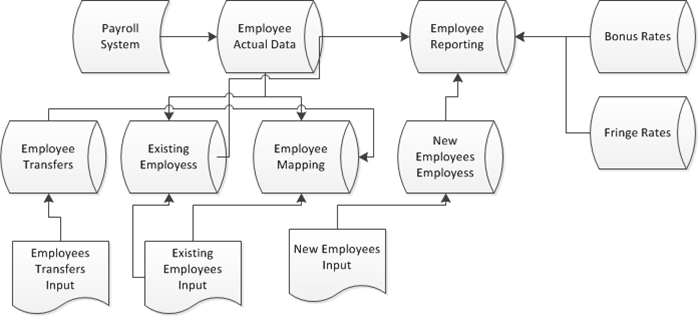In Cognos 10.2.1 and earlier versions, the phrase that most accurately described a multi-page report was “wrestling match.” Long list reports would flow on for page after page until somewhere along the way you ran into that chart you knew you added but were starting to forget about. Defining page breaks helped some, but following the flow of a multi-page report was often a tiresome process that left your mouse hand cramped from clicking Page Down. With the release of Cognos 10.2.2, IBM changed all that with tabbed reports. Read more
Tag Archive for: Platform
TM1 cubes have now become the OLAP solution of choice for many Cognos BI environments. Because of this emerging trend, there are some techniques and tips that TM1 developers should be familiar with when building a cube for Cognos BI reports. Initially, the Cognos BI platform was built around Transformer OLAP cubes. Transformer cubes are similar to TM1 in many aspects but there are some important structural differences that affect how users consume them in Cognos BI. This article will discuss in detail some of these differences and how to utilize some hidden features of TM1 to build a cube that will mimic the structural features available in Cognos Transformer and make your Cognos BI developer’s job easier. Read more
Nowadays, anyone from age two to ninety interacts with the internet in some form. Mobile devices have become an increasingly popular means of access. Technology innovations in the form of smartphones and tablets have dramatically changed the way we conduct our daily lives, both in business and personal settings. Because of this societal shift, tools like IBM Cognos Mobile, which delivers rich BI results in the office or on the go, are leading trends in IT. Research studies show that organizations that both prioritize mobile technology initiatives and implement a mobile strategy – not just for IT but across the entire company – are more likely to experience revenue growth and improve IT effectiveness . So with this in mind, what exactly is IBM Cognos Mobile, and what does it offer? Let’s take a quick look. Read more
To learn more about Cognos Analytics, the next-generation Cognos platform that IBM announced at Insight 2015, please check out our article on the product’s top 4 release features.
Update, October 6, 2015: Cognos 10.2.2 has been around for almost a year now, and we’ve had a lot of time to dig deeper into the features we discussed originally in this article. To keep you informed on what we’ve found out, this post’s original author Crystal Meyers has gone back and added new reflections and insights she’s gained while working with 10.2.2 in the field. Check out her new thoughts in italics below. Read more
On October 21st, Ironside hosted Robust Workforce Planning Enablement with IBM Cognos TM1 Webinar, where Ironside’s TM1 experts discussed the challenges and options for cube design and conducted a live demonstration of Ironside’s TM1 workforce planning solution.
Ironside’s planning solutions offer greater capabilities and flexibility than packaged cloud solutions or when compared against other enterprise planning offerings. Read more
Employee compensation accounts for most of the expense base for service-oriented companies. The true ‘driver’ for this expense revolves around workforce planning. Creating a projection that matches the size of the workforce to the demands of the business can be a difficult exercise. Like most complex tasks, breaking it down into manageable components makes it easier to implement. This is the core principle behind driver-based compensation planning. Read more
There is a plethora of content available on utilizing the various TM1 functions, but what happens when these functions do not work as expected? What do you do when a rule does not return the expected value, a TI process does not load the values you had hoped for, or a cube’s performance is below acceptable levels? This article will cover some techniques for debugging TM1 that you can use to resolve issues with rules, TI processes, and cube performance. Read more
At first glance, IBM Cognos TM1 and Cognos Planning have similar features. They both leverage a multicube architecture and support complex, cross-cube calculations.
The primary differentiating feature of IBM Cognos TM1 can be found in its efficient calculation engine and its method for storing data. When users enter data into most other planning applications, a read/write procedure is performed to reflect the change in a database stored on a hard disk. In contrast, IBM Cognos TM1 calculations and data storage happens in memory/RAM. This allows entered data to be immediately updated within the cube and retrieved. As a result, data is available real-time, which greatly enhances both the performance of queries and ability to perform what-if analytics. Read more
Many are looking to IBM Puredata System for Analytics (Netezza) but are unsure of the complexity of implementation. Is it a lift and shift? Is there redevelopment involved? The focus of this article is to describe the process for migrating from Oracle. At a high level this process is the same when migrating from other RDBMS but every RDBMS has its own nuances that should be taken into consideration. Read more
The IBM Cognos BI 10.2.1 release made significant enhancements to the Dynamic Cube options available in the product. One major boost to functionality is that you can now add enhanced security within Cube Designer and not have to restart the Dynamic Cube, and there are many other similar benefits included as well. Read more


